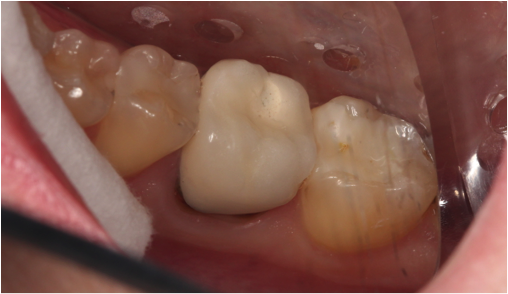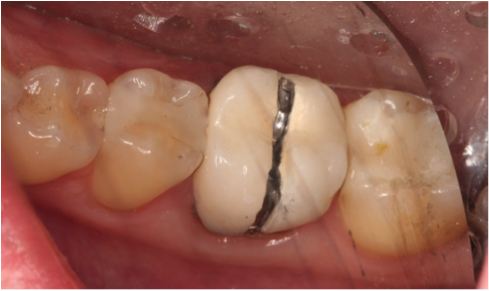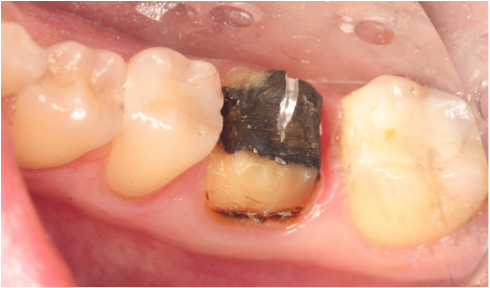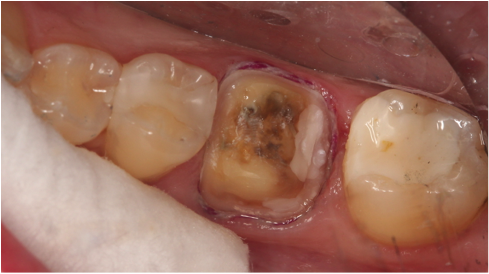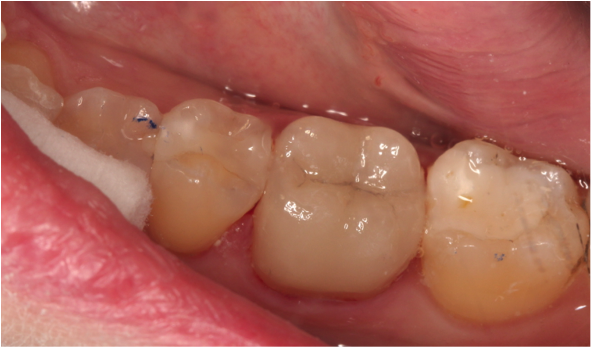Restoring with CEREC - Rolling the dice with a PFM
Day after day cases like this come in our offices - old PFMs that have gotten to the end of their useful life, or we think they have. We can only surmise, since the metal coping prevents us from seeing totally what is happening underneath the restoration. The margin is open, but how much decay is there? How much clearance is there? What kind of prep was done? In essence, there is a long list of what ifs that could be lying underneath the old PFM. Sometimes when you are going to work on one of these beauties, it can be a crap shoot. Sometimes you and the patient win - sometimes you lose. I say beauties since the PFM has been held as the esthetic gold standard for our esthetic dentistry for generations.
So here we have a replacement that came in the office. The margin had a catch when checking with an explorer.
The x-ray looked pretty good; just a minor step at the margin. The tooth didn’t bother the patient, or it didn’t until they were told the crown was starting to leak. So even though from experience we know it should be replaced, we don’t have a lot of hard evidence to back it up. We are rolling the dice that there is deterioration going on that we don’t see, but with an old PFM cemented with zinc phosphate cement, it’s like betting with house money. A safe bet for sure.
When we remove an old restoration, don’t think that since a crown was there you can turn off your brain. Do your depth cuts. In this case, the original preparation was under-reduced. Since there was an additional 1.5 mm of amalgam core, reduction was a non-issue once that was removed.
The existing bevel can be removed, allowing you to place a modified shoulder for proper milling of the margin. The decay is removed, and even though it is deep, the ability to seal it immediately decreases the chance of the pulp acting up. The other thing you will notice in the prep is that sometimes it is OK to place a liner.
If the decision is to remove a lot of sound tooth structure to make a smooth wall, I think it is OK to fill that defect with a liner. The smoother the preparation form, the better my milling chamber can produce a well-fitting restoration.
With the cerecdoctors.com Scientific Symposium in Vegas happening soon, my thoughts have turned to rolling the dice. With old PFMs where the margins are starting to get a catch, you might think replacing them is a crap shoot. Sometimes it is when we are dealing with a restoration containing metal, since we can’t see all. But usually when you roll the dice, you are betting with house money.
just finished #30 with the same scenario.... I did the PFM in 1988 (lord I'm aging), saw something suspicious on the bitewing, and within one appointment my 84 year old patient was happy as could be. No crap shoot, always in everyone's best interest.



